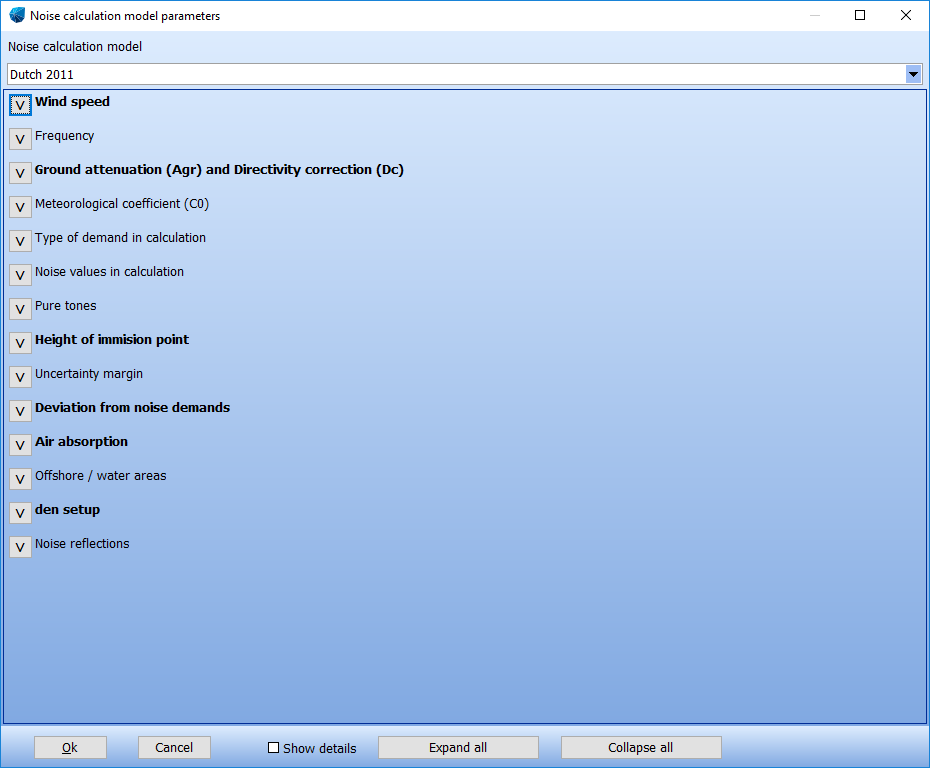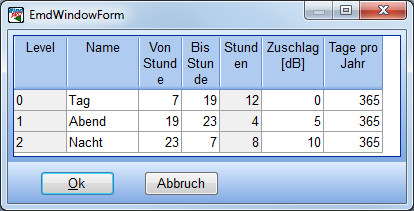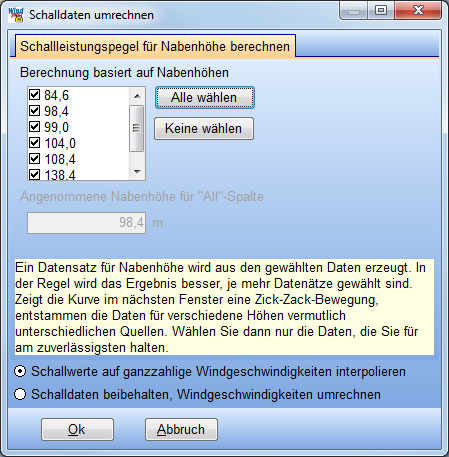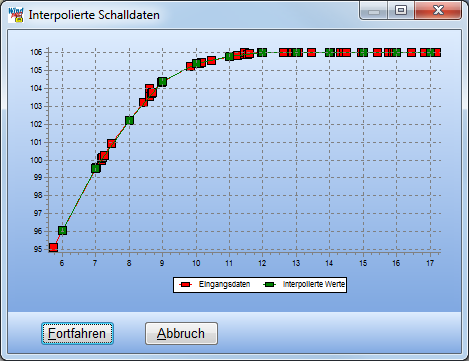Niederländische Vorschrift, 2011 (Englisch)
Zur deutschen Hauptseite | Alle deutschsprachigen Seiten
The Dutch calculation method from 2011 is described in “Reken- en meetvoorschrift windturbines” from 2/2-2010. It is based on the Lden principle and use an adapted version of ISO 9613-2 as propagation model.
The calculation model is selected by choosing Dutch 2011 as Noise calculation model.
Wind speed
The Dutch 2010 code operate with average noise received day, evening and night. In order to calculate how much noise on average is emitted in each time period, an average octave band distribution is calculated. This is based on the octave band distribution at each wind speed bin from cut in to cut out weighted with the frequency of that bin.
The octave band distributions for each wind speed bin must be found in the wind turbine catalogue. It goes without saying that it requires a fairly complete set of data, something which will rarely if ever be present among the default values in the catalogue. If only a limited amount of wind speeds will be available windPRO will interpolate between them, set noise below cut-in to 3 m/s and set the noise constant when extrapolating from the highest wind speed to cut-out. If no octave band distribution exist for a specific wind speed windPRO will scale the octave band distribution of the closest wind speed. If no octave band distribution exists at all windPRO will fit a generic octave band distribution to the total noise level. This is of course insufficient for a correct calculation.
The frequency of each wind speed is found from a database provided by KNMI and found on the web site www.windenergie.nl . Based on the location of the site center of the project windPRO looks up this location in the database and extract the frequency table for day, evening and night.
The formula for calculating the average noise for each time period is described in more detail in appendix.
Ground attenuation The ground attenuation factor is defined for values of 0 and 1, but it is allowed to use any value in between. As with the other ISO 9613-2 calculations in windPRO a uniform ground factor is used.
Meteorological coefficient, C0 For distances less than 10 times hub height (actually 10 times difference in z coordinate of hub and receptor) the meteorological coefficient, C0 is 0. Beyond that distance C0 is a function of distance and direction from turbine to receptor in the way that maximum C0 is achieved downwind from the turbine.
The function for calculating C0 is described in appendix.
Type of demand in calculation Only noise from WTG’s is taken into account.
Noise values in calculation windPRO will on its own present all values as Lden values.
Pure tones Pure tone penalty are added to demand.
Height of immission point above ground level There is no mention in the code of receptor height. For the calculations it is set to 5 m.
Deviation from official noise demand This field is open to the user.
Edit period The Dutch codes operate with noise values as Lden, where den is an abbreviation of day-evening-night. It represents a weighted average of noise, where noise during evening and night is penalized. The parameters can be seen or modified by pressing the Edit period button as seen below.
The period definition of day, evening and night can be set here, as well as the penalty due for each period.
Noise receptors The general noise limit in The Netherland is 47 dB Lden and 41 dB Lnight. The default setting for a Dutch receptor is 47 dB and this is also the noise value used on the noise ISO line report, but both Lden and Lnight can be found in the noise report.
Noise data for WTG As described in a separate section below an individual noise mode can be selected for the three periods as part of advanced settings of the turbine.
Source noise data for the turbine is based on wind speed at hub height. If data for the turbine is only given at 10 m height they may need to be converted to hub height (section 2.6). Since a calculation is made for each integer wind speed at hub height it may be preferable to convert 10 m height wind speeds to hub height integer wind speed even though that means an interpolation of data points.



